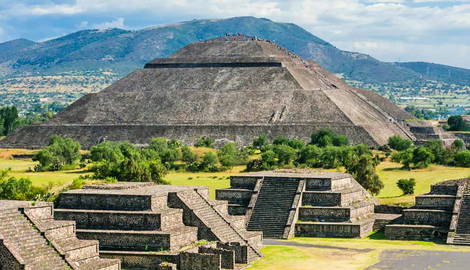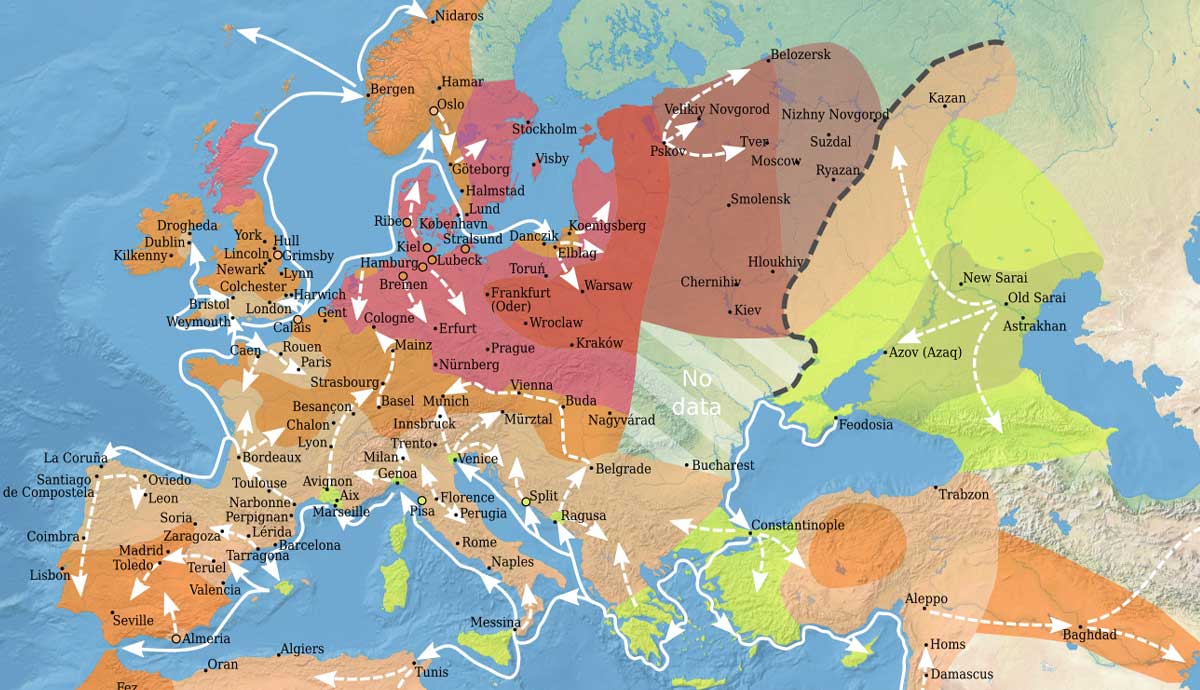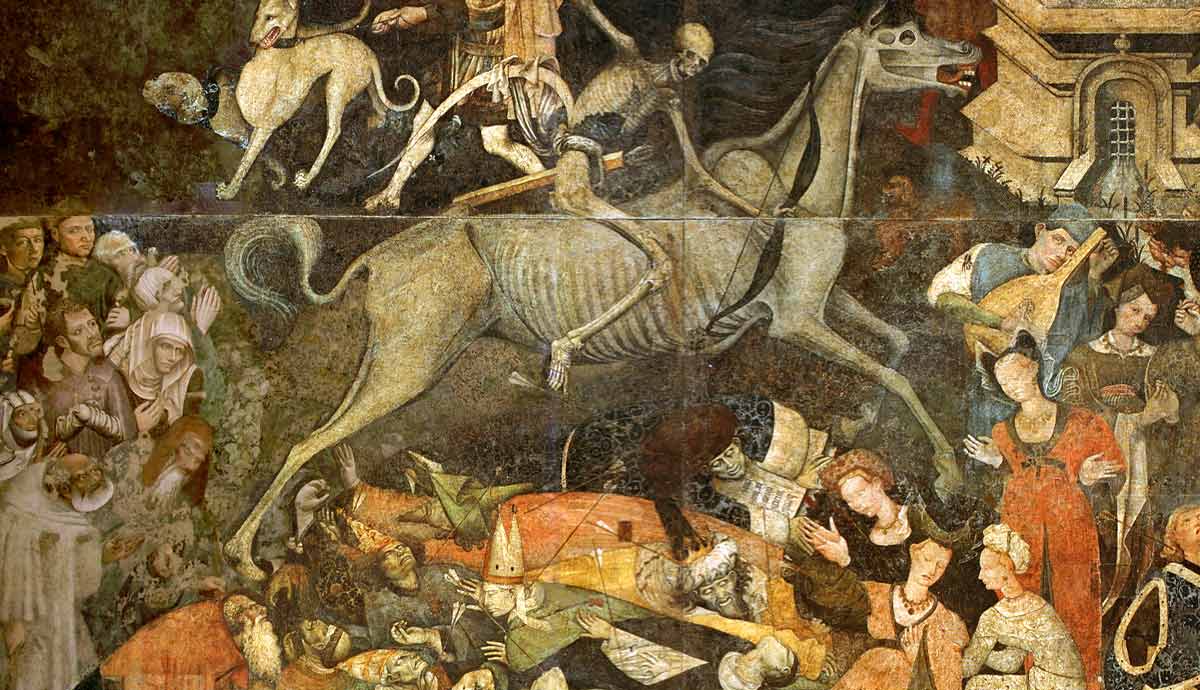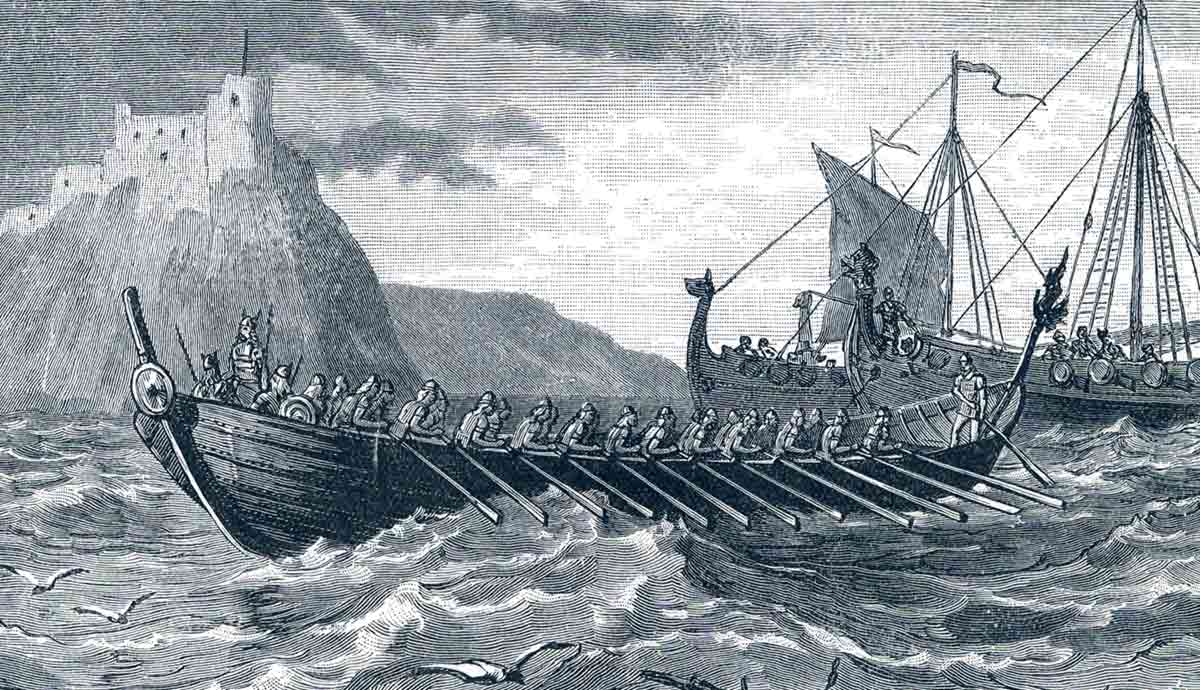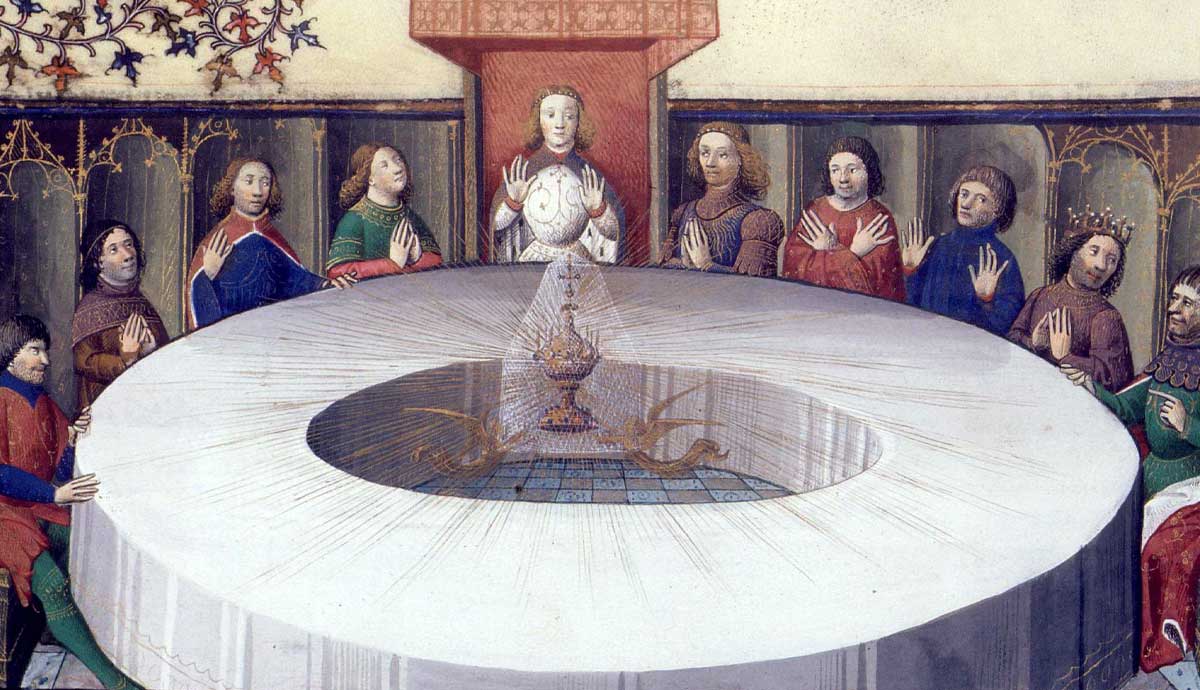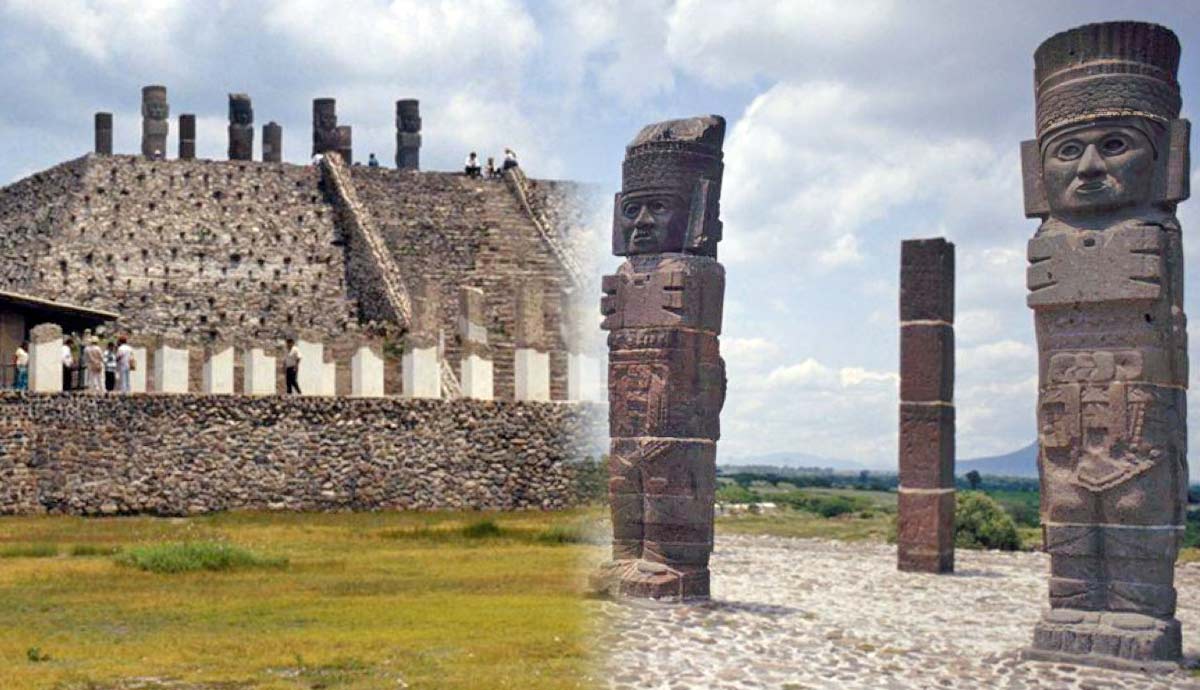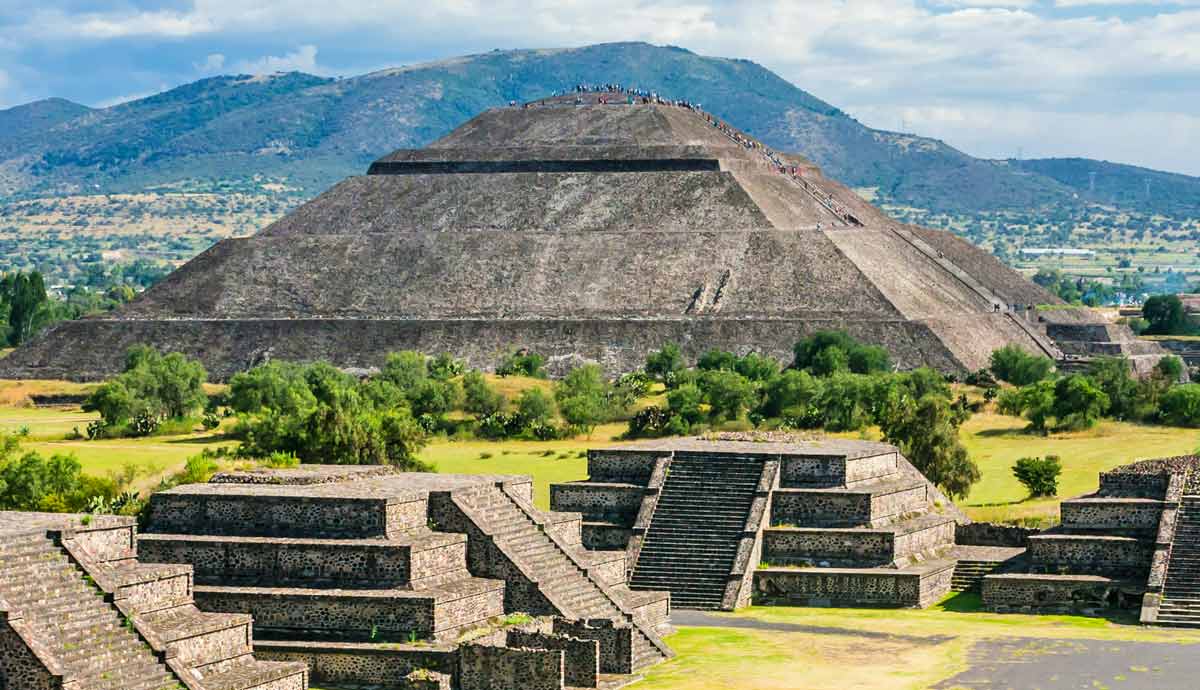
Mexican pyramids are a key feature of ancient Mesoamerican architecture. While they share some similarities with Egyptian pyramids, these structures have flat tops, often with temples built on them, and stairways that rise along their sides. The stairways resemble ancient Mesopotamian Ziggurats.
That said, the largest pyramid in the world by sheer size is the Great Pyramid of Cholula and is located in the east-central Mexican state of Puebla. Builders of some classic Mesoamerican pyramids decorated them with illustrations related to prominent myths such as the Hero Twins, creation myths, and ritual sacrifices. The stories were sometimes inscribed on pyramids through hieroglyphic illustrations. For example, The Temple of the Inscriptions situated in the ancient Maya city of Palenque features hieroglyphic inscriptions that illustrate the history of the ancient city and its rulers such as Pakal. It also served as his tomb. Pakal’s tomb was discovered in 1952 by Mexican archaeologist Alberto Ruz Lhuillier.
Who Built the Mexican Pyramids?

Early Mexican civilizations like the Maya, Olmec, Zapotec, and the Aztec built their pyramids for many purposes that ranged from housing their gods to burying their kings. The creations can still be seen across Mexico today.Temple-pyramids were the center of public life in many of their cities, and the place for sacred ceremonies, including human sacrifice. That said, some of the most popular Mexican pyramids are the Pyramid of the Moon, the Pyramid of the Sun, and El Castillo.

In regards to the most well-known pyramids in Teotihuacan, such as the Pyramids of the Sun and the Moon, it is believed that the Teotihuacán civilization (the standard term for the unknown civilization) lived there between 150 BCE to 650 CE and built them during this period. It is still unknown who exactly built them.
What Are the Unique Features of Olmec Pyramids?

The Olmec were among the first major Mesoamerican civilizations. They emerged along the Gulf Coast of Mexico around 1200 BC and are believed to have been among the first societies in the region to build religious temples and pyramids that later cultures such as the Aztecs and the Maya derived inspiration from. Like many Mexican and Mesoamerican societies, the Olmec offered blood sacrifices to their gods through human sacrifices. The sacrifices were regularly carried out in sacred places such as the pyramids. The Great Pyramid in La Venta, one of their pyramids, is considered to be one of the earliest known pyramids.
San Lorenzo, the first Olmec city, was mostly deserted by around 900 BCE. It was about that time that La Venta became a major Olmec city. The Olmec Great Pyramid of La Venta was built in the city and is hailed as one of the largest Mesoamerican structures of its era. Even after 2500 years of weathering, it still stands at a height of 100 feet. The monumental pyramid featured mosaic pavements and was largely made using tons of clay. It also has ceremonial gifts such as statues and pottery.
What Are the Main Characteristics of Aztec Pyramids?

The Aztec pyramids were built in levels. In that sense, the Aztec pyramids are more like the Mesopotamian ones. The Aztecs built some of the most impressive pyramids between the 14th and 16th centuries. The pyramids were built for religious purposes and typically had temples on top of them. Building pyramid temples was an important architectural undertaking for the Aztecs because of their religious significance.
The Aztecs sacrificed people, often prisoners of war at the top of the pyramids. The practice is one of the well-documented segments of Aztec cultural history. Today, some Aztec pyramid ruins are still intact.
What Are the Unique Qualities of Mayan Pyramids?

The city-states of the Maya civilization controlled southern Mesoamerica intermittently for hundreds of years. The Maya built grand cities and huge pyramids in difficult jungle terrain. It is especially surprising that they did this without relying on wheels to carry large limestone blocks from faraway mountain quarries to their building sites. It is hypothesized that they largely relied on human strength.
It is believed that they carried smaller blocks with a tumpline, which is a backpack held by a strap that went around the forehead. By distributing the weight to the neck and the spine instead of the arms, the tumpline allowed them to carry heavier loads. Like other pre-metalworking civilizations, the Maya fashioned tools such as chisels from rocks like obsidian and jadeite. Craftsmen used the tools to make decorations on building structures.
The ancient Maya were also very interested in space and time. They carefully studied the stars and aligned their cities and pyramids with complex astronomical patterns such as equinoxes. Examples of Mayan Pyramids in Mexico include El Castillo, Nohoch Mul, the Pyramid of the Magician, and Ek Balam.
